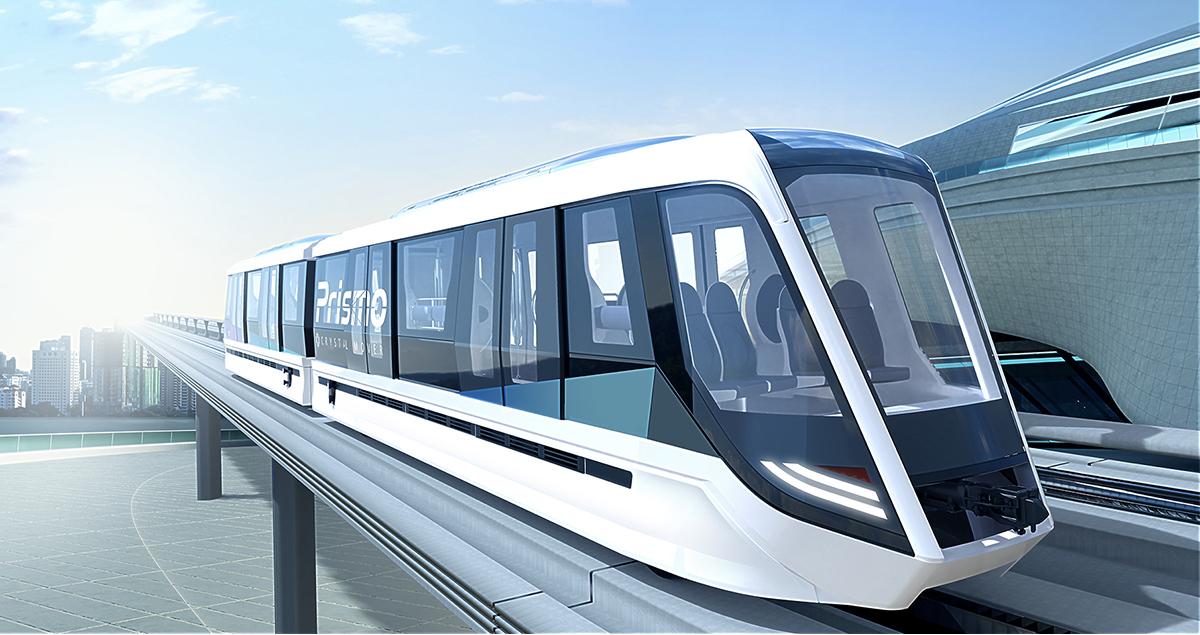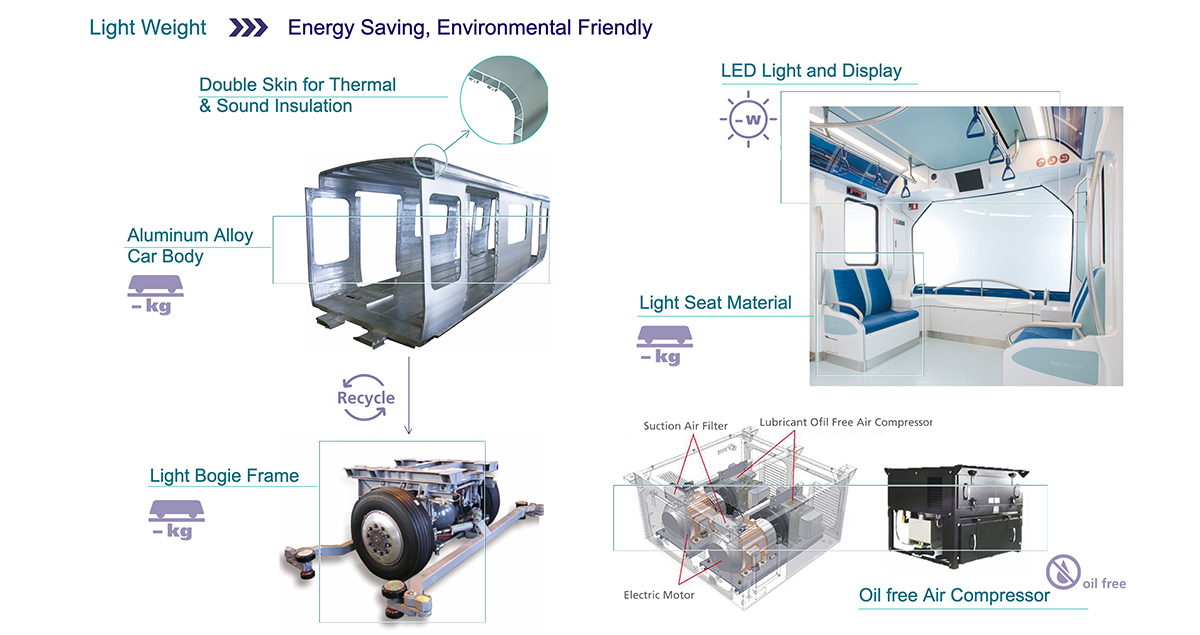More eco-friendly and flexible: Prismo pioneers modern transit systems

This article was previously published in our newsletter, if you're not already a subscriber, sign up here.
The challenge for public transit systems is to transport as many people as manageable, with maximum affordability and the least environmental impact. Add in the requirement to navigate around existing infrastructure in a crowded urban setting and that challenge becomes truly daunting.
This is why cities and airports around the world are increasingly turning to Automated Guideway Transits (AGTs), a type of mid-sized transit system that offers several advantages over traditional rail and bus networks.
Because the footprint is smaller, AGTs can be built above or around existing roads or buildings, reducing land acquisition and infrastructure costs and cutting construction times. Since they use rubber tires, they can navigate tighter curves and steeper grades than traditional rail, enabling more flexible route design.
Those rubber tires also limit noise, vibration and friction, which alongside their electric power makes them more environmentally friendly than diesel-driven systems. AGTs are also fully automated, improving safety and energy consumption by eliminating human error and even individual driving habits, as well as reducing operating costs.
As Japan’s leading manufacturer of AGTs, Mitsubishi Heavy Industries (MHI) is well aware of these strengths. As well as holding a 50% domestic market share, its AGTs operate in major cities across Asia and the Middle East from Singapore and Macau to Dubai, and many US airports. As a systems integrator, MHI builds not only the track and rolling stock but can also handle the signaling, power supply, platform doors and automated fare collection.
The benefits of staying single
Yet as cities experiment with different modes of transport, from electric buses to subsidized bicycles and perhaps air taxis in the future, there is a need to keep rail systems as competitive as possible. This imperative is behind last month’s launch of Prismo, MHI’s latest AGT model, the first new one in a decade, as a new addition to its world-leading Crystal Mover series.
The key innovation (literally) driving Prismo is an onboard energy storage system – basically a high-density, high-power battery that can recharge in seconds. This means Prismo does not need a power rail between stations, since the train recharges each time it stops at a station and during breaking.
Not only does this yield a 10% energy saving during operation. No longer having to build the power rail between stations required by all previous AGTs and with a newly adopted single guiderail, the entire system is slimmer and simpler to build, leading to significantly reduced infrastructure construction costs. And because the power is onboard, Prismo will always make it to the next station, while predecessors risked being stranded if their power rails failed.

To further reduce costs and improve environmental performance, Prismo’s train cars are made from an aluminum alloy rather than the heavier stainless steel used by competitors. The cars use a double skin to improve heat and sound insulation; lighter bogies (wheels) and seat material further cut down on weight, while LED lighting needs less power. The brake system uses an oil-free air compressor.
Making it clean and green
Prismo is assembled at MHI’s Mihara factory in Hiroshima in western Japan, where nearly a century of experience in building rail systems combines with modern manufacturing techniques, such as friction stir welding that joins panels without the need for solder. Surrounded by marine areas, hills and lush greenery, the Mihara plant was established in the 1940s to make steam trains and air braking system for railway vehicles.
The train cars slowly come together as they move along the assembly line inside the giant 400 -meter-long factory hall, as pieces are welded together, equipment is installed, and paint is layered on – though many customers now prefer eco-friendly hairline finishing, where the metal is polished to a smooth texture, like straight hair.
While much of the process is automated, using giant machine tools, welding torches and cranes, building trains requires the assembly of thousands of parts from a dozen suppliers – so many steps are still done manually, as is the rigorous, step-by-step quality control. Finally, the finished trains are put through their paces on the factory’s 1.5-kilometer test track before being shipped. While Mihara has built over 1,100 train cars, what makes it different today is that MHI is working to decarbonize the entire plant – as a pilot project of the group’s MISSION NET ZERO to achieve carbon neutrality by 2040.

By installing a sea of solar panels on fallow ground around its buildings, the factory now derives 100% of its electricity from renewables, eliminating its Scope 2 emissions. Alongside rigorous energy conservation and streamlining initiatives such as the use of electric vehicles, this has also significantly reduced its Scope 1 emissions. In total, the plant has eliminated 10,000 tons of CO₂ emissions a year.
Mihara leads the way
As the renamed ‘Carbon Neutral Transition Hub Mihara’, the plant is piloting ways in which MHI can transform the environmental impact of all of its many worldwide facilities. In another example, MHI is conserving the adjacent Wadaoki woodland adjoining the Mihara factory, where staff go to stroll, jog and eat lunch in a green setting surrounded by bird song.
Meanwhile, the cuts already achieved translate into a 40% reduction in CO₂ emissions during manufacturing. Together with all of its other efficiencies, this means Prismo’s lifecycle emissions, from manufacturing to operation to disposal, will be at least one tenth lower than those of the previous Urbanismo model and significantly lower than those of a fleet of diesel powered or even EV buses that can carry the same passenger loads.
That should prove a key attraction, particularly outside Japan, specifically US as the initial target market for Prismo. But it also illustrates the pioneering role that the Mobility business, part of MHI’s recently established GX (Green transformation) Solutions segment is playing within the wider group.
As one of the senior engineers of Prismo notes, the opportunity to create transportation systems that will shape cities, benefit the environment and impact many people’s lives is a very fulfilling one.
![]()
Learn more about MHI’s Prismo, an eco-friendly next generation AGT





